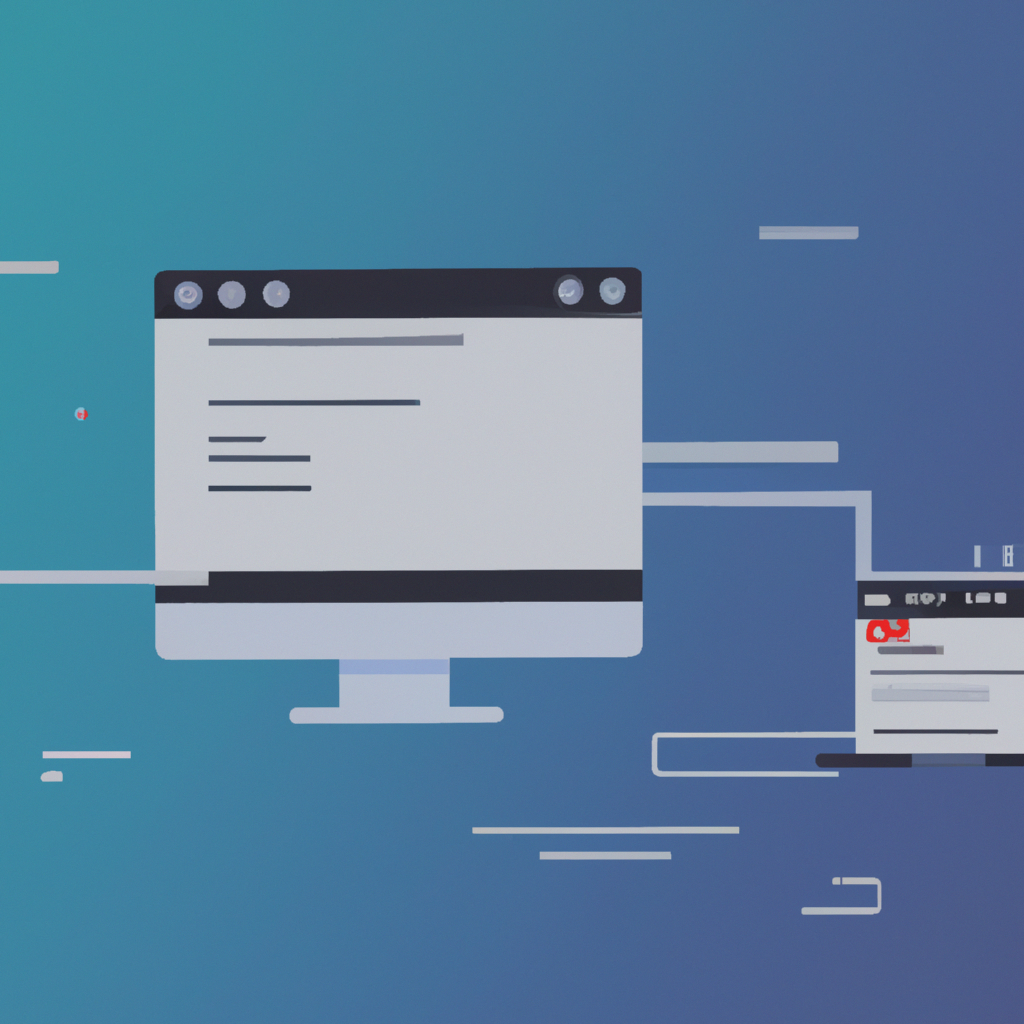If you’ve ever found yourself frustrated with a slow-loading WordPress site, you’re not alone. Waiting for pages to load can be a major hindrance for both visitors and site owners. Fortunately, there are several effective strategies you can implement to boost your site’s loading times and optimize the overall user experience. From optimizing images to utilizing caching plugins, this article will provide you with valuable tips and insights on how to speed up your WordPress site and keep your visitors engaged.
How to Make Money with YouTube
Create an empire of automated video websites for multiple streams of income
Theme Optimization
Choose a Lightweight Theme
When it comes to optimizing your WordPress site for speed, one of the first things you should consider is choosing a lightweight theme. The theme you choose plays a major role in the overall performance of your site, as it determines the amount of code that needs to be loaded. Opting for a lightweight theme means that there will be less code to load, resulting in faster loading times for your site.
When selecting a theme, look for those that are designed with speed in mind. Avoid themes that are bloated with unnecessary features and functionality. Choose a theme that is well-coded and follows best practices for performance optimization. By doing so, you can ensure that your site’s loading times are optimized from the start.
Use a Caching Plugin
Another effective way to optimize your WordPress site is by using a caching plugin. Caching allows your site to store static versions of your pages, which can then be served to visitors without having to generate the pages from scratch each time. This can significantly reduce the server load and speed up the loading times for your site.
There are many caching plugins available for WordPress, such as WP Super Cache and W3 Total Cache. These plugins work by creating cached versions of your pages and serving them to visitors, which helps to minimize the time it takes for your site to load. By using a caching plugin, you can improve the overall performance of your site and provide a faster browsing experience for your visitors.
Minify CSS and JavaScript Files
To further optimize your WordPress site, it is important to minify your CSS and JavaScript files. Minification is the process of removing unnecessary characters, such as spaces and line breaks, from your code. By doing so, you can reduce the file size of your CSS and JavaScript files, which in turn can improve your site’s loading times.
There are several tools available, both online and as WordPress plugins, that can help you minify your CSS and JavaScript files. These tools will automatically remove unnecessary characters from your code and generate minified versions of your files. Once you have minified your files, be sure to update the references in your site’s code to the minified versions.
By minifying your CSS and JavaScript files, you can decrease the amount of data that needs to be transferred when a visitor requests a page on your site. This can result in faster loading times and a better user experience.
Image Optimization
Compress Images
Images are an important element of any website, but they can also contribute to slow loading times if not optimized properly. One of the key aspects of image optimization is compressing your images to reduce their file size.
When compressing images, you want to strike a balance between file size and image quality. There are many online tools and WordPress plugins available that can help you compress your images without sacrificing too much quality. These tools use various compression techniques to reduce the file size of your images, resulting in faster loading times for your site.
Before uploading images to your WordPress site, make sure to resize them to the appropriate dimensions. Uploading large images and then resizing them in the WordPress editor can negatively impact your site’s performance. By resizing your images before uploading, you can ensure that they are not larger than necessary, which in turn can improve your site’s loading times.
Lazy Load Images
Another effective technique for optimizing your WordPress site’s loading times is lazy loading images. Lazy loading is a technique where images are only loaded when they are visible on the user’s screen. This means that images that are below the fold or not immediately visible to the user will not be loaded until the user scrolls down to them.
Lazy loading can significantly improve your site’s loading times, especially when you have a lot of images on a single page. By implementing lazy loading, you can reduce the initial load time of your pages and improve the overall user experience.
There are many WordPress plugins available that can help you implement lazy loading on your site. These plugins work by automatically adding the necessary JavaScript code to your site, which enables the lazy loading functionality. By using a lazy loading plugin, you can optimize your site’s loading times and provide a better browsing experience for your visitors.
Specify Image Dimensions
Specifying image dimensions is another important aspect of image optimization. When you specify the dimensions of an image in your HTML or CSS, the browser can reserve the appropriate space for the image, which can help to speed up the rendering of your pages.
By specifying image dimensions, you prevent your content from shifting around as images load. This can improve the perceived loading times of your site and provide a smoother browsing experience for your visitors. When adding images to your WordPress site, make sure to specify their dimensions in the HTML or CSS code.
If you are using a responsive theme, you can use CSS techniques such as max-width: 100% to ensure that your images scale properly on different devices. By combining image compression, lazy loading, and specifying image dimensions, you can optimize the loading times of your WordPress site and provide a better user experience.

Reduce HTTP Requests
Combine CSS and JavaScript Files
One of the major factors that can slow down your WordPress site’s loading times is the number of HTTP requests it has to make to load all the necessary assets, such as CSS and JavaScript files. Each HTTP request adds overhead to the loading process and can result in slower loading times.
One way to reduce the number of HTTP requests is by combining CSS and JavaScript files. By combining multiple files into a single file, you can minimize the number of requests the browser needs to make to load your site. This can significantly reduce the loading times of your pages and improve the overall performance of your site.
There are many tools available that can help you combine CSS and JavaScript files, such as WP Rocket and Autoptimize. These tools work by automatically combining and minifying your files, which can help to reduce the number of HTTP requests made by your site. By using these tools, you can optimize the loading times of your WordPress site and provide a faster browsing experience for your visitors.
Inline Small CSS and JavaScript Files
While combining CSS and JavaScript files can reduce the number of HTTP requests, it may not always be practical to combine all your files into a single file. In some cases, you may have small CSS or JavaScript files that are only used on specific pages of your site.
In such cases, you can consider inlining these small files directly into your HTML code. By doing so, you eliminate the need for an additional HTTP request to fetch these files, which can help to improve the loading times of your pages. However, it is important to note that inlining files can increase the size of your HTML code, so it should only be done for small files that are used sparingly.
To inline small CSS and JavaScript files, you can use WordPress plugins such as Autoptimize or WP Rocket, which provide options to inline specific files. By selectively inline your files, you can reduce the number of HTTP requests made by your site and optimize its loading times.
Remove Unnecessary Plugins and Scripts
Another important aspect of reducing HTTP requests is removing unnecessary plugins and scripts from your WordPress site. Every plugin and script you install adds additional files that need to be loaded, resulting in slower loading times.
Take the time to review the plugins and scripts you have installed on your site and remove any that are not necessary. Many plugins and scripts add CSS and JavaScript files to your site, which can increase the number of HTTP requests and slow down the loading times. By removing unnecessary plugins and scripts, you can significantly reduce the amount of code that needs to be loaded and improve the overall performance of your site.
Before removing any plugins or scripts, make sure to create a backup of your site and test it thoroughly to ensure that everything is still functioning as expected. It is also a good practice to regularly review and update your plugins to ensure that you are using the latest versions, as updates often include performance improvements.
Database Optimization
Optimize WordPress Database
Optimizing your WordPress database is another important step in speeding up your site’s loading times. Over time, your database can become bloated with unnecessary data, such as post revisions, spam comments, and unused data from plugins. This can increase the size of your database and slow down the loading times of your site.
Optimizing your database involves cleaning up and optimizing its tables to remove unnecessary data and improve performance. There are several WordPress plugins available that can help you optimize your database, such as WP-Optimize and WP Rocket. These plugins can automatically clean up and optimize your database tables, which can result in faster loading times for your site.
Before optimizing your database, make sure to create a backup of your site to ensure that you can restore it in case anything goes wrong. It is also a good practice to regularly optimize your database to keep it running efficiently and maintain optimal performance for your site.
Use Object Caching
In addition to optimizing your database, using object caching can also help to speed up your WordPress site. Object caching involves storing the results of expensive database queries, such as retrieving posts or user data, in memory. This allows subsequent requests for the same data to be served from the cache, reducing the need to query the database and improving performance.
There are several object caching plugins available for WordPress, such as Redis Object Cache and Memcached. These plugins work by connecting your WordPress site to a caching server, such as Redis or Memcached, and allowing you to store and retrieve data from the cache. By using object caching, you can significantly reduce the load on your database and improve the loading times of your site.
Implementing object caching may require some technical knowledge, so it is recommended to consult with a developer or follow the documentation provided by the caching plugin you choose. By using object caching, you can optimize your WordPress site’s database performance and provide a faster browsing experience for your visitors.

Content Delivery Networks (CDNs)
Implement a CDN
Implementing a content delivery network (CDN) can be a game-changer when it comes to optimizing your WordPress site for speed. A CDN is a network of servers located around the world that store static content from your site, such as images, CSS, and JavaScript files. When a visitor requests a page from your site, the CDN delivers the content from the server closest to the visitor’s location, reducing the distance the data needs to travel and improving the loading times.
To implement a CDN, you will need to sign up with a CDN provider and configure your WordPress site to use the CDN. Many CDN providers offer WordPress plugins that make it easy to integrate their services with your site. Once you have configured your site to use the CDN, your static content will be automatically delivered from the CDN’s servers, resulting in faster loading times for your site.
Choose a Reliable CDN Provider
When choosing a CDN provider, it is important to consider reliability and performance. Look for a provider that has a large network of servers located around the world, as this will ensure that your content is served quickly to visitors from anywhere in the world. Additionally, consider the provider’s track record for uptime and customer support.
There are many CDN providers to choose from, such as Cloudflare, MaxCDN, and Fastly. Each provider has its own pricing plans and features, so it is recommended to do some research and compare the options before making a decision. By choosing a reliable CDN provider, you can optimize your site’s loading times and provide a better user experience for your visitors.
Enable Gzip Compression
Enabling Gzip compression is another effective way to optimize your WordPress site for speed. Gzip compression works by compressing your site’s files, such as HTML, CSS, and JavaScript files, before they are sent over the network. This reduces the file size of these files, resulting in faster loading times for your site.
To enable Gzip compression, you will need to modify your site’s .htaccess file or configure your server software to enable compression. Many WordPress caching plugins, such as WP Rocket and W3 Total Cache, provide options to enable Gzip compression with just a few clicks. By enabling Gzip compression, you can significantly reduce the file size of your site’s files and improve the loading times for your visitors.

Browser Caching
Browser caching is another important aspect of optimizing your WordPress site for speed. When a visitor requests a page on your site, the browser stores a cached version of the page so that it can be quickly loaded again in the future. This reduces the amount of data that needs to be transferred and improves the loading times for subsequent visits.
To enable browser caching, you will need to modify your site’s .htaccess file or configure your server software. Many WordPress caching plugins offer options to enable browser caching, which will automatically add the necessary code to your site. By enabling browser caching, you can improve the performance of your site and provide a faster browsing experience for your visitors.
Minify HTML and CSS
Minifying your HTML and CSS files is another effective technique for optimizing your WordPress site’s loading times. Minification involves removing unnecessary characters, such as spaces and line breaks, from your code to reduce file size. This can contribute to faster loading times, as the browser can process the code more quickly.
There are many online tools and WordPress plugins available that can help you minify your HTML and CSS files. These tools automatically remove unnecessary characters from your code and generate minified versions of your files. Once you have minified your files, be sure to update the references in your site’s code to the minified versions.
By minifying your HTML and CSS files, you can decrease the amount of data that needs to be transferred when a visitor requests a page on your site. This can result in faster loading times and a better user experience.

Use a Fast Web Hosting Provider
The choice of web hosting provider can have a significant impact on the loading times of your WordPress site. A fast and reliable web hosting provider will ensure that your site’s files are served quickly to visitors, resulting in faster loading times.
When choosing a web hosting provider, consider the provider’s server infrastructure, such as the hardware and network capacity. Look for providers that use SSD storage, have multiple data centers located around the world, and offer a content delivery network (CDN) as part of their hosting packages. Additionally, check the provider’s track record for uptime and customer support.
There are many web hosting providers to choose from, such as Bluehost, SiteGround, and WP Engine. Each provider has its own pricing plans and features, so it is recommended to do some research and compare the options before making a decision. By choosing a fast web hosting provider, you can ensure that your site’s loading times are optimized and provide a better user experience for your visitors.
Regularly Update WordPress and Plugins
Keep WordPress and Plugins Updated
Regularly updating your WordPress installation and plugins is crucial for maintaining optimal performance and security. Updates often include bug fixes, performance improvements, and security patches that can improve the overall loading times of your site.
To update your WordPress installation, simply navigate to the Updates page in your WordPress dashboard. If updates are available, you will see a notification and a button to update your site. It is recommended to create a backup of your site before updating, as updates can occasionally cause compatibility issues.
Updating your plugins is also important for optimizing your site’s loading times. Many plugin developers release updates that address performance issues and introduce optimizations. To update your plugins, go to the Plugins page in your WordPress dashboard and check for available updates. If updates are available, simply click the update button next to each plugin.
Remove Unused Themes and Plugins
In addition to keeping your WordPress installation and plugins updated, it is also important to regularly remove any unused themes and plugins from your site. Unused themes and plugins can add unnecessary code and files to your site, which can slow down the loading times.
To remove unused themes, go to the Appearance page in your WordPress dashboard and click on the Themes tab. From there, you can delete any themes that you are not using.
To remove unused plugins, go to the Plugins page in your WordPress dashboard and deactivate and delete any plugins that you no longer need.
By removing unused themes and plugins, you can reduce the amount of code that needs to be loaded and improve the overall performance of your site.
In conclusion, optimizing your WordPress site for speed is crucial for providing a better user experience and improving your search engine rankings. By following the steps outlined in this article, such as choosing a lightweight theme, compressing images, reducing HTTP requests, optimizing your database, implementing a CDN, enabling Gzip compression, enabling browser caching, minifying HTML and CSS, using a fast web hosting provider, and regularly updating WordPress and plugins, you can significantly improve the loading times of your site and provide a faster browsing experience for your visitors. Remember to regularly monitor and test the performance of your site to ensure that it remains fast and responsive.







